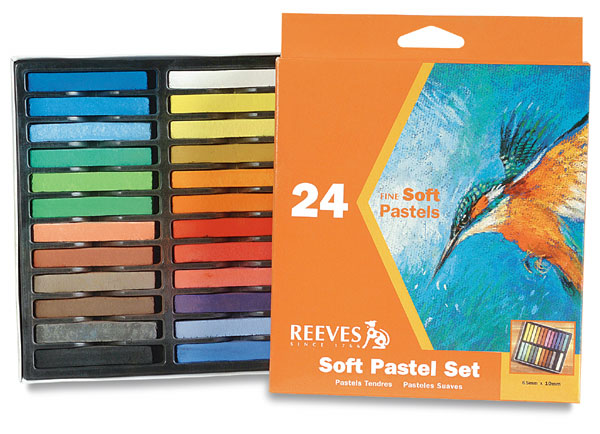I have been asked a few times by people about soft pastels as a painting medium. It seems that when people hear about soft pastels a few would immediately get the picture of “Crayola” or “Guitar”, two popular brands of “crayons” we grew up with which we used in kindergarten for our colouring books. Although, soft pastel is sometimes referred to as crayons, these two types of crayons (the kindergarten and soft pastels) are not the same. Firstly, in simple terms, as defined in Wikepedia, “ a crayon is a stick of colored wax, charcoal, chalk, or other materials used for writing, coloring, drawing, and other methods of illustration.” Therefore, “crayon” is a generic term for any coloured sticks used for drawing. The kindergarten type is a wax crayon. Oil pastels contain pigment combined with non-drying oil and wax binders. On the other hand, soft pastels contain ground pigment combined with dry gum binders and chalk. According to Wikepedia, it is the “most widely used form of pastel. The sticks have a higher portion of pigment and less binder, resulting in brighter colors.”
The way to use a soft pastel is much like how we use a pencil or kindergarten crayons. It is used by rubbing the sticks over an abrasive surface, leaving colour on the grain of the paper, canvas, sandboard or paper. A few of the popular paper used are the Colorfix, and Mi-teintes, among others. I also use watercolour paper and the result is great.
Blending soft pastel is easier than with oil pastel or any other medium. All one does is rub or smudge it with a finger. However, as pastels contain chalk as well, smudging results in a fair amount of dust. It is for this “chalky” reason also that soft pastel paintings need to be protected by framing the painting in glass. Some artists like using fixatives to aid in fixing the pastel on the paper.
Generally, a pastel artwork is called a painting if the entire surface of the paper or canvas is covered in pastel, if it is not, then artists like to call them sketch or drawing.
 Cost-wise, a 3-inch (approx.) stick of soft pastel would be about $4.00 to $7.00, depending on the brand. Some known brands include Sennelier, Unison, Reeves, Schmincke, and Rembrandt, to name a few. On a rough estimate, there could be a few hundred colour selections available, so collecting each of them could be come to a substantial amount. A significant savings on cost of purchase can be had by buying in sets, but the colour range is much limited, so buying individual sticks is unavoidable. The better quality pastels cost a lot more, but it is worth investing in them because they really offer a wide range of colour selections and once applied on paper comes out brighter and more vibrant than the cheaper options.
Cost-wise, a 3-inch (approx.) stick of soft pastel would be about $4.00 to $7.00, depending on the brand. Some known brands include Sennelier, Unison, Reeves, Schmincke, and Rembrandt, to name a few. On a rough estimate, there could be a few hundred colour selections available, so collecting each of them could be come to a substantial amount. A significant savings on cost of purchase can be had by buying in sets, but the colour range is much limited, so buying individual sticks is unavoidable. The better quality pastels cost a lot more, but it is worth investing in them because they really offer a wide range of colour selections and once applied on paper comes out brighter and more vibrant than the cheaper options. Soft pastel as an art medium is very popular nowadays as evidenced by the existence of Pastel Art Societies all over the world. In art shows, there are separate categories dedicated to pastel art, along with other media such as oil, acrylic, etc. People like to collect pastel paintings because of the medium’s inherent bright colours combined with the artist’s artistry.
Photocredits: vanessaturner.com and dickblick.com

No comments:
Post a Comment